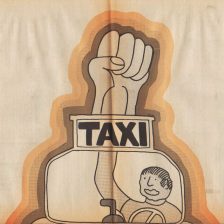When a politician, TV anchor or newspaper opinion writer starts out by saying that “Everyone agrees”, I think it’s time to pay attention. There are not too many instances where everybody agrees—except about something that’s really wonderful or awful. Everybody does agree, I think, that a rainbow in the sky is beautiful. They also all agree that stepping in dog shit is really bad. After that, all bets are off.
Kidding aside, let’s move on to more serious stuff. In these days, we’ve seen our fair share of “Everybody agrees” claims bouncing off the TV screens. I’m sure that you’ve all heard that “Everybody agrees that children should be in school.” But, although I am only one, I suggest that not everybody does agree.
Let me talk about why being in school is not always such a good thing and why perfectly reasonable people would want to disagree.
At best, many kids are bored to tears in school. At worst, they hate it and for good reasons. School makes lots of kids feel incredibly stupid. From the earliest days of kindergarten, it becomes evident that some kids are able to read while other kids appear to be endlessly frustrated by the written words. The evidence of success on the one hand and failure on the other is manifested in the grouping of students into barely disguised groups (such as red birds, blue birds and yellow birds) of kids based on their “progress”—kids doing really well, kids doing more or less OK and other kids way behind. It takes kids about a fast minute to figure out what’s going on and to draw their own conclusions. It’s also painfully evident when kids are asked to read aloud. Some kids read effortlessly but others hesitate and stumble at most of the words. Sometimes, they’re simply guessing and hoping that the ordeal will end sooner rather than later.
Often enough, this results in the kids being sent off for a special education evaluation. Special education waits like a flytrap; it exists to capture kids for a learning or reading disability. Sure enough, the evaluation reveals the telltale signs of such a disability—children reverse the letters “b” and “d” when they’re printed in the lower case. Now truth be known, while understanding how the alphabet works is absolutely basic to reading and writing, it is hardly simple. In the case of the English alphabet we use, twenty-six letters are adequate for representing millions of words. Even more remarkable is how few different shapes are used. Many shapes can represent different sounds merely by changing their direction. For example, if an adult picks up a chair and asks a child what it is, he or she will know; if you turn the chair upside down or sideways, the child will know that it’s still a chair. But not so with “b’s” and “d’s.” The “d” is simply the “b” flipped over from right to left. But, after it’s flipped, it’s no longer a “b.” While it’s perfectly reasonable for kids not to pay all that much attention to the difference, it comes to be seen as proof positive that something is wrong with the kid.
Not surprisingly, kids who have been labeled as failures learn how to fight back to protect themselves from further abuse. One of the funniest manifestations of kids recognizing the real deal occurs during the well-known silent reading period when students are asked to read on their own for thirty minutes or so. Kids who can’t really read figure out how long they should look at a page in a book before they turn to the next page–to make it look like they’re reading. Only the teachers are fooled.
It might be helpful to compare learning to read to kids starting to walk and talk. Some kids start walking well before they turn one and others start talking in sentences well before two. But other kids do neither and no one makes much of a big deal about it. Imagine if those toddlers had to go to school to learn how to walk or talk. We’d have a whole lot of walking-disabled and talking-disabled people around. School staffs often come to think that they are responsible for the success of early readers. I’d suggest that it might be good for them to be a little less quick to claim credit unless and until they’re also ready to take the responsibility for the kids who don’t learn.
My point is that schools are remarkably unprepared or unwilling to recognize the all but inevitable differences among children’s development. Every child is supposed to be on the same track and measuring progress or the lack thereof is mostly what schools do. Meanwhile, the kids who are “behind” are fed a steady diet of bewilderment and humiliation. It is not so unusual for a child, who was simply not given an opportunity and the support to progress at his or her own rate, winding up years later not being able to read very much at all. Later on, they get to experience the joys of being scolded and punished when they act out a bit instead of sitting meekly in their seats while feeling crappy. Then they get left back and, if all goes badly (which it does too frequently), they eventually drop out.
There are many more tales to be told of children being tormented by school but I hope that this short account has made my point. Before we join in the unthinking chorus of what kids need to do, let’s stop and think about what they don’t need either.



Leave a Reply